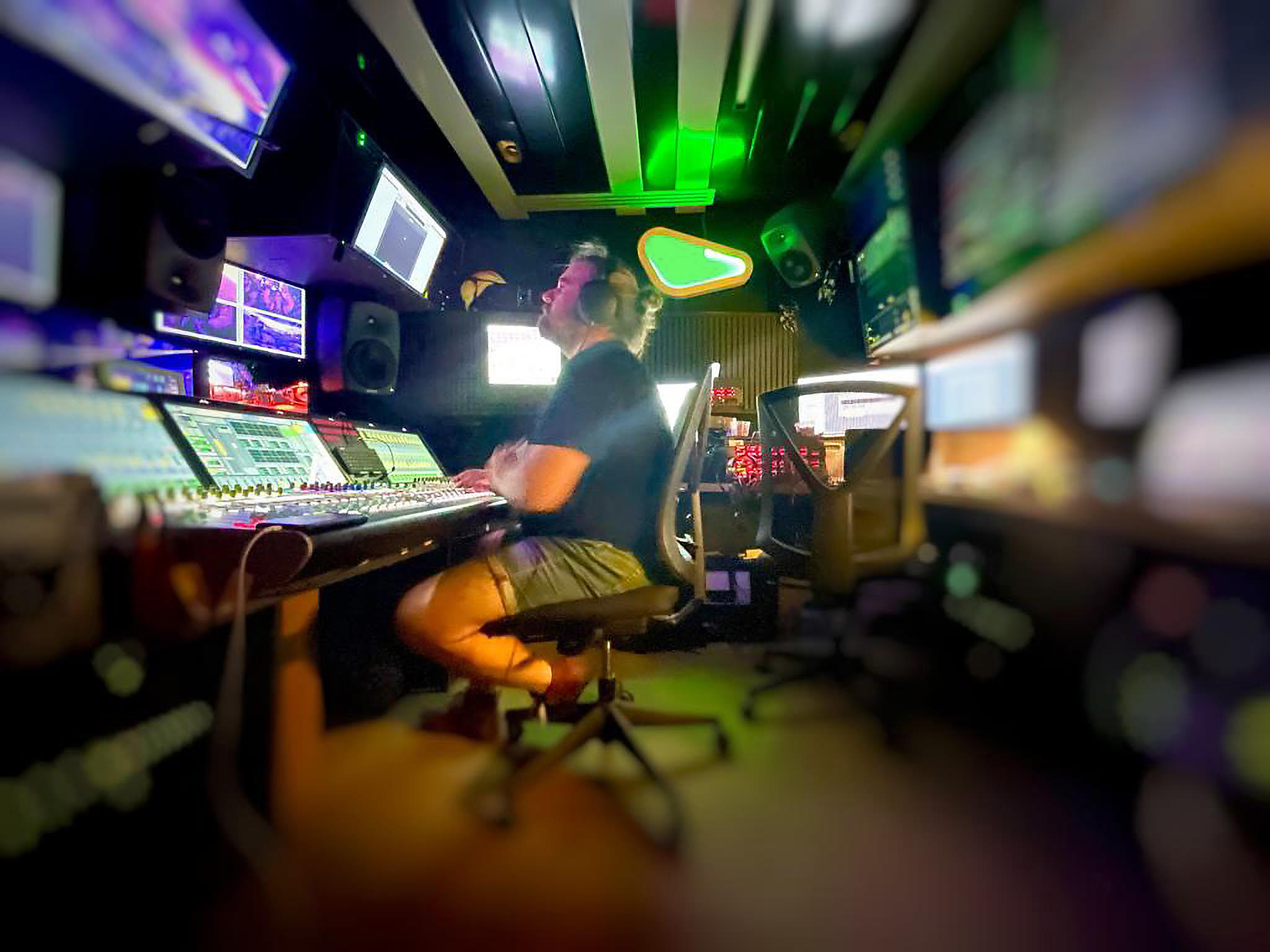Tomorrowland Taps Lawo mc² for Boundless Flexibility and Reach
We used about 180 input channels on our mc²56 console to handle the sources coming from the main stage

ANTWERP, Belgium—Tomorrowland, one of the largest electronic music festivals in the world, held its 2022 Summer edition during the last three weekends in July. As a service provider for production companies, public and private broadcasters and top-tier events, we were asked by Euro Media Group (EMG) to take care of the “Mainstage” sound for TV broadcasts and radio streams from a big OB truck stationed behind the main stage.
While some people might think Tomorrowland is just another EDM festival with simple left and right stereo feeds from the DJ booths and a few ambient mics, the Tomorrowland team continuously strives to surpass itself.
This year’s three weekends (Friday, Saturday, Sunday) were among the most complex music events on the planet for audio and video distribution. We used about 180 input channels on our mc²56 console to handle the sources coming from the main stage. Three other stages were connected to their own dedicated mc²56-equipped OB truck, and the remaining 12 stages provided at least five audio channels consisting of the DJ outputs, ambience microphones and a voice mix for radio purposes.
Yet another big OB truck with a large mc²56 desk served as the main transmission and distribution hub.
Distribution Path
Around 60 audio channels (music, vocal and ambient mics) were ingested using Lawo’s DALLIS I/O stageboxes and CCUs. These lines were sent to the console inputs and processed with delay for perfect sync to the slowest camera input. Effects were added using the WAVES VST plug-in server on the console and outboard gear such as a TC Electronics System 6000.
All incoming audio signals, summing and group busses were furthermore recorded using three separate multitrack computers: for archiving purposes on the Media Village server, as backup and for artists who had requested a recording of their live performances.
Most of the close-camera microphones were mixed using the mc²56’s AFV feature (audio follows video) to perfectly match the fast video cutting approach for up-tempo music. Audio signals were assigned to a dozen summing and group busses and routed to the designated video recording devices and V__pro8 embedders via VSM. From there, the signals went to the final control room at the Media Village over an external high-speed audio network.
Dolby Atmos
We also used this network to transmit and receive audio signals to/from the Dolby Atmos control room where the immersive mix was prepared on yet another mc²56 console. That control room received our main ambience mix and additional FX microphone signals. The Dolby Atmos mix stems were transmitted back to the OB truck behind the main stage for Dolby Atmos encoding and decoding.
We used several V__pro8 devices to de-embed these signals and send them to the mc²56 where they were mixed—along with the required commercials—into the main transmission busses, again using the AFV algorithm. We embedded the resulting bus signals using a V__pro8 and transmitted the result to the main control room at the Media Village.
All audio signals from all stages were mixed and distributed as stems and groups from the mc²56 and processing core and handed over to Belgian radio stations and the rest of the world.
What I like most about Lawo mc² consoles—apart from their pristine sound—is the flexibility, endless routing capabilities, modular layout possibilities, and the divine user interface. I just love that central console window! The signal window is really intuitive and clutter-free, which is a big help in complex routing scenarios. No “cross-point view” for me, please… just show me the sources and destinations, and I’m happy.
For more information, contact Lawo at 888-810-4468 or visit https://lawo.com.
Get the TV Tech Newsletter
The professional video industry's #1 source for news, trends and product and tech information. Sign up below.
Bart Ooms started out as an intern at Motormusic Studios in Belgium and then joined Alfacam, first as an audio assistant and then as audio chief. After Alfacam’s demise, he went on to head DB Video’s audio department, simultaneously working at five Tomorrowland editions as guarantee engineer in charge of audio and intercom for the broadcast department. He is currently the CEO of Belgian-based Knallen Maar!
